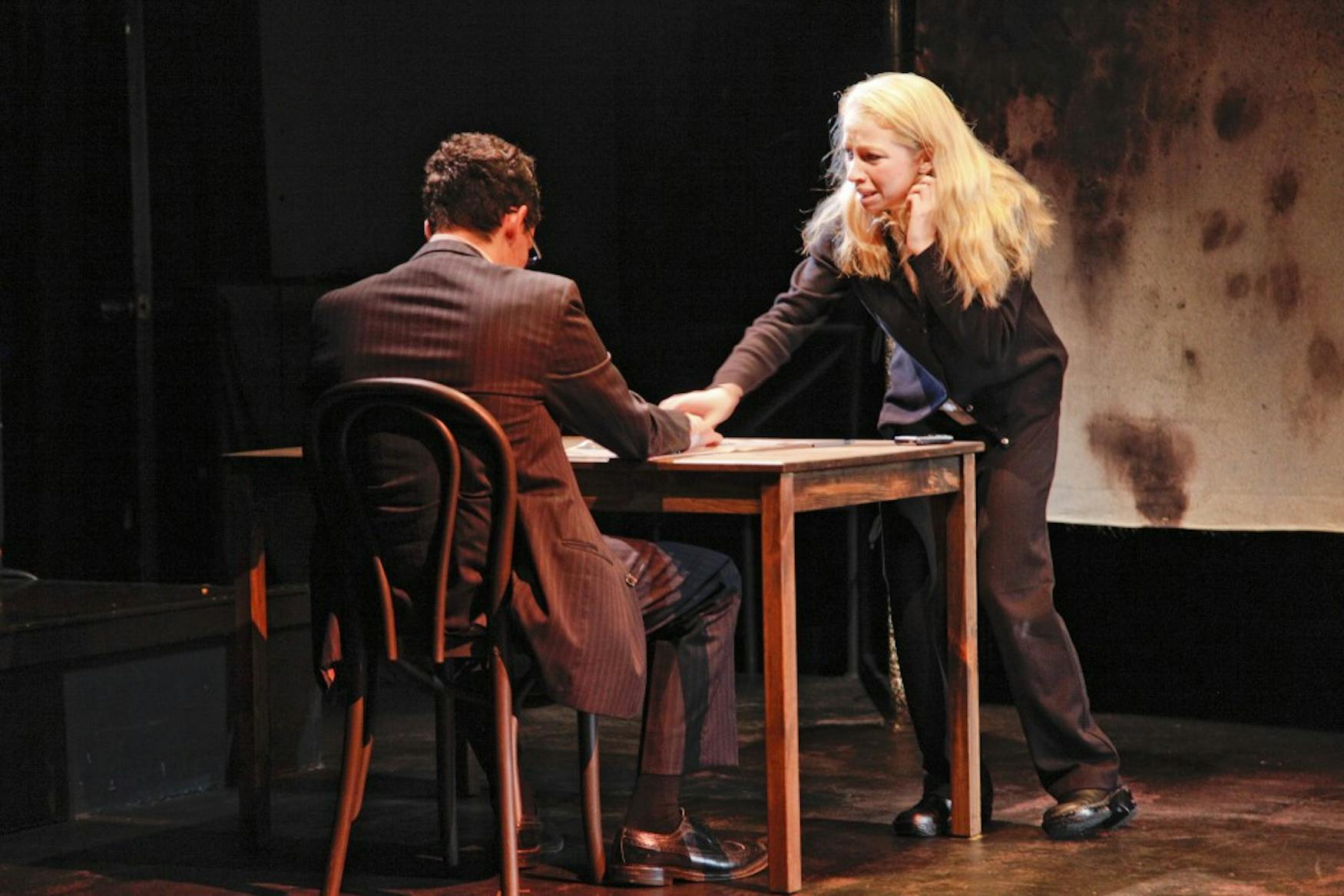BTC play examines the themes of life and loss
Brandeis Theater Company’s production of Dead Man’s Cell Phone, directed by Prof. Adrienne Krstansky (THA) brings up deep questions about life after death and technology’s place in our world through many aspects of production.
The show opens with Jean (Samantha Browne-Walters ’15) sitting in a café across the stage from Gordon (Alex Davis ’15), who she soon realizes has quietly passed away while sitting at the table. His phone is on the table, ringing incessantly. Once she realizes that he is dead, Jean decides to answer his phone, drawing her into Gordon’s life and his family. Through the lies she tells to various people in his life in order to comfort them, she finds herself becoming more and more of a part of Gordon’s family and ultimately, his life. In the second act, the play shows what has happened to Gordon in the afterlife. Within the logic of the play, when one dies, they spend all of time with the one person or being, such as the animal they loved most.
Browne-Walters’ and Davis’ acting is remarkable in the show. Browne-Walters’ Jean is very clearly out of her element in this new environment—“I hardly knew him,” she says, and now she finds herself a major part of his family. Throughout the show, the audience can see how uncomfortable Jean is in her new role as the person to whom it has fallen to “keep Gordon alive.”
Despite what one might expect, the role of Gordon is actually a fairly large role. Gordon has a long monologue to start the second act, which is expertly performed by Davis. Through the monologue, the audience learns a fair amount of Gordon’s back-story, including his job, which is shrouded in secrecy, both for the audience and other characters, until this point. Gordon is very self-involved—it becomes clear when he first arrives in the afterlife that the person he loves most is himself. But Davis conveys this trait in a way that makes Gordon fairly sympathetic, while staying true to the character as it was written.
The scenic design of Dead Man’s Cell Phone, created by Cristina Todesco, a lecturer in scenic design at Boston University, masterfully conveys the setting of the show. The place and time in which the action of the show happens is not specified (the playbill notes “Time: The present, Place: A city), but Todesco’s scenic design suggests a quaint Victorian setting, which fits with dramaturge Zoe Golub-Sass’ ’16 description of Jean as a “modified version of the archetypal Victorian orphan.” Included in the scenic design are the light fixtures themselves, which add a Victorian feel to the play even though it is set in the present-day. The lights used are ceiling light fixtures and chandeliers that drop down on flies.
Former Prof. David Wilson’s (THA) light design adds a certain air of mystery to the production, which helps to convey the message of the play. While the audience is taken on a journey that includes Johannesburg, the lighting is a significant part of what takes the audience there through flashing lights and sound effects to simulate the noise of an airplane. Throughout the show, most of the lighting is very dim, though the stage is fully lit at times for emphasis.
Overall, Dead Man’s Cell Phone is a provocative production that prompts the audience to consider deep questions in life, such as what happens after we die and how technology has affected or even eliminated our ability to have meaningful relationships with others. The entire show is a bit of an experiment, one based on various questions of life in modern times.
“If anything, this play shows our own coming of age in the modern age,” Golub-Sass writes in the dramaturge’s note in the playbill, “As we are offered the opportunity to go faster—travel, Amazon orders, WiFi—we must find the time to pause and connect, to stop time—and make an imprint.”



Please note All comments are eligible for publication in The Justice.